
About This Quiz
If we know anything about the arts, from painting to literature, it's that these creative endeavors are never stagnant. They are constantly growing and evolving with the times, as artists try to adapt and build to put their own stamp on an art period. How familiar are you with the famous paintings associated with various art movements throughout the centuries? Here's a quiz where you can find out.Â
When you study art movements, you learn that they are built around common goals that artists are trying to accomplish as a collective. These goals have a built-in philosophy which provides that collective group with an ability to thread their work together into a specific period of time, as they distinguish themselves from what came before and what will come after. These changes in art give us not only a glimpse of the artists and what they were thinking but also a view of how the world was interpreted during different eras.Â
Do you know how all of these different eras were defined? From the early Romanesque works to movements launched in the 20th century, will you be able to identify all of the art pieces that fall under each movement?Â
If you're prepared to put your art history knowledge up against a real test, jump back in time by matching these art pieces to their movement.Â
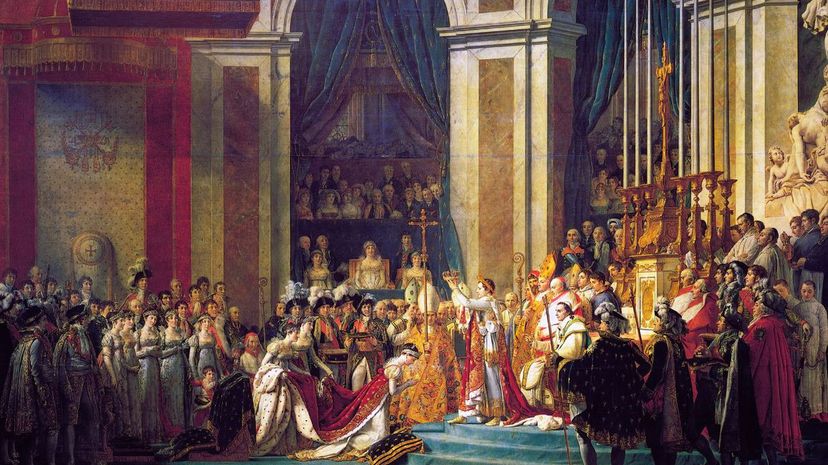
As Neoclassicism became prevalent across Europe, the style relied on the traditional hierarchy initiated by the French Royal Academy of the Arts. This hierarchy placed history paintings at the forefront, and these paintings became central in the Neoclassical movement.
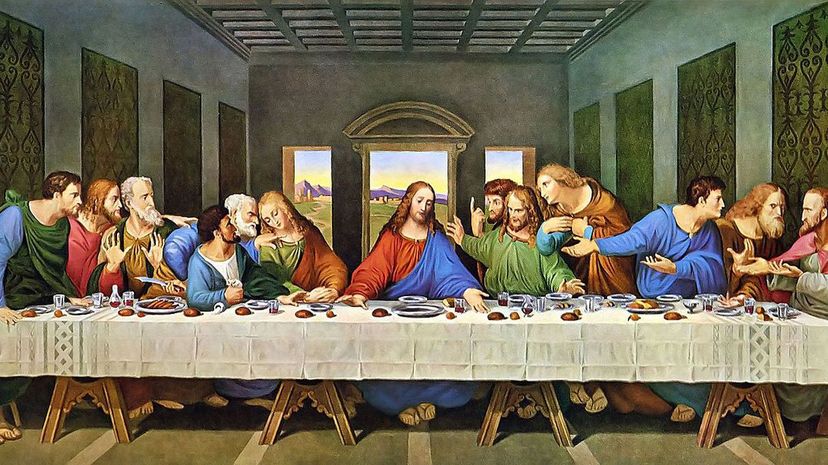
Though the Renaissance influenced art across the European continent, Italy proved to be the leading center of the movement. No two cities in Italy were more important during this time than Florence and Rome.
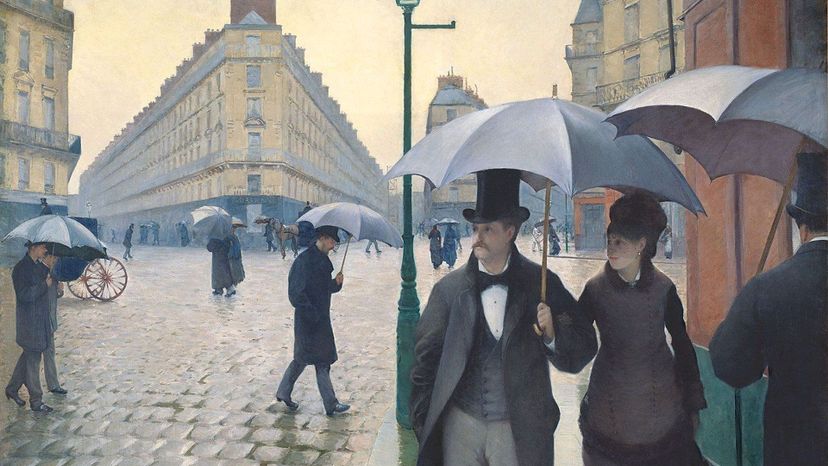
Impressionism was a reaction to the rapid industrialization that engulfed much of the world at the end of the 19th century. The style depicted this period of urbanization as chaotic and isolating.
Advertisement
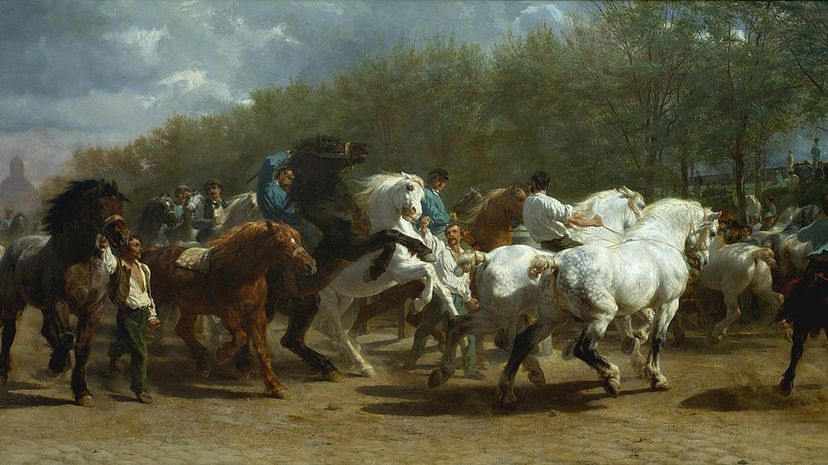
Realism was a reaction to the increasing importance of science in modern society due to the Enlightenment and the Scientific Revolution. The movement, which relied on ideas of empiricism and positivism, sought to capture only what the artist viewed as real.
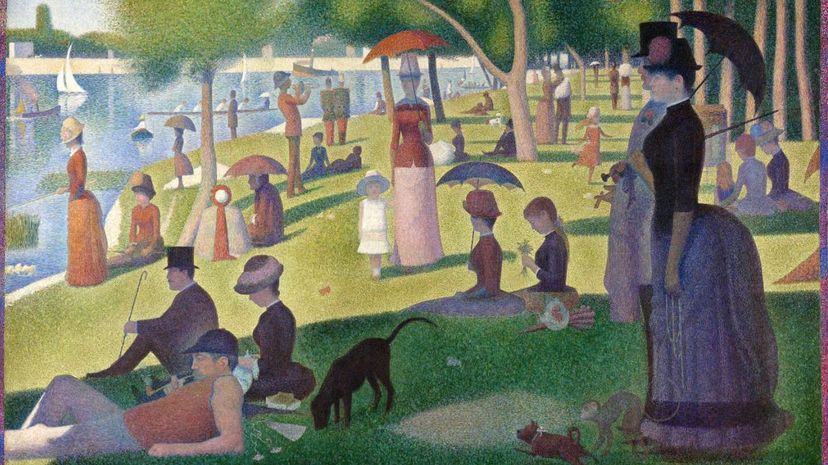
Neo-Impressionism pushed the boundaries of the Impressionist works that preceded the former's movement. This new style tried to systematically examine the potential uses of both form and color.
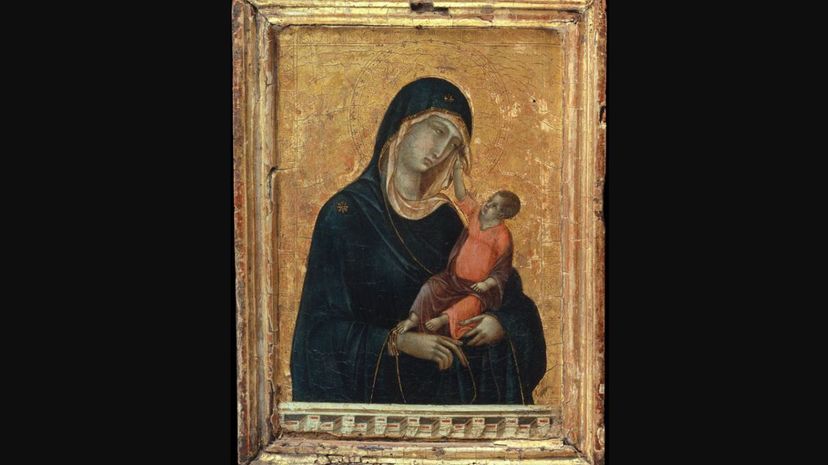
The term Gothic comes from the Nordic tribes that brought an end to the Western Roman Empire starting in the fifth century. In reference to art, the term contrasted this new "barbaric" style with the classical style that preceded it.
Advertisement
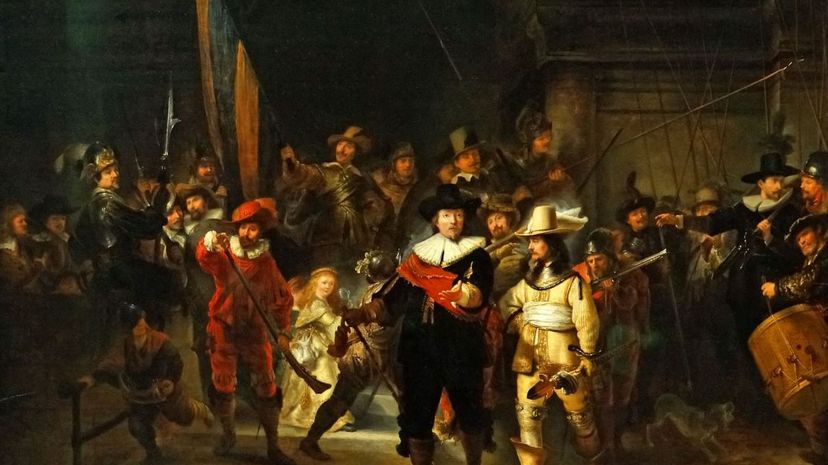
As with most early art movements, Baroque started in Italy before spreading throughout Europe near the end of the Renaissance. Important artists under this movement included Caravaggio, Diego Velazquez and Rembrandt.

Realism found subjects of everyday life to be the most appealing for the artwork. On the contrary, they detested historical paintings because they weren't realistic and didn't live in the present.
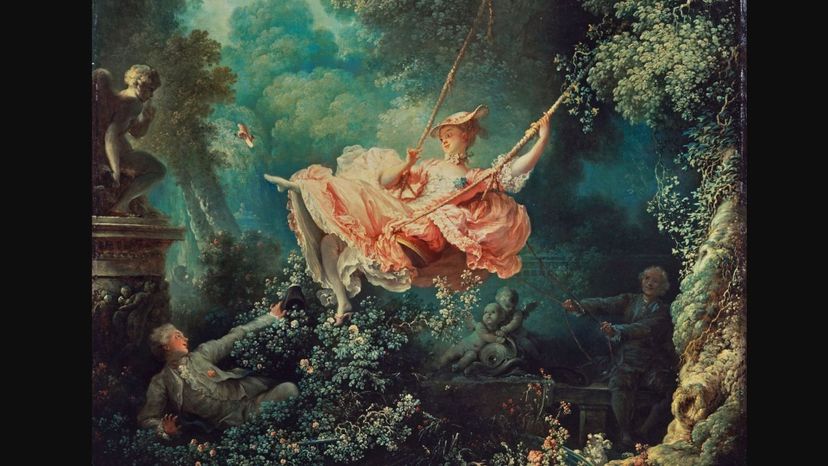
The Rococo movement came about after the death of Louis XIV of France, who was a patron of the arts and inspired artists to take residence in the court of Versailles. With Louis dead, these artists left the court for town houses across Paris.
Advertisement

Originating in Germany, Expressionism started at the beginning of the 20th century, evolving from the Symbolist movement that came before it. Expressionism sought to capture the anxiety and feeling of isolation that engulfed those who felt lost as the world globalized around them.

Romanesque, as the name suggests, created art in the manner of the Romans. The term, however, wasn't first used to describe such art until art historians reflected back on the period in the early 19th century.
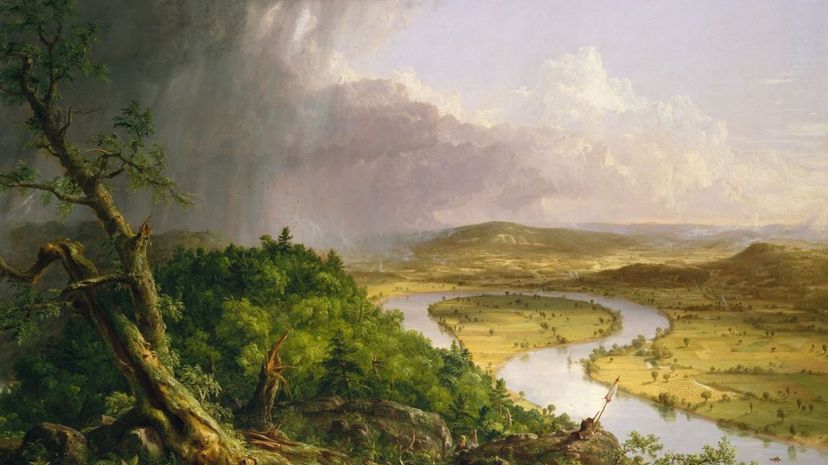
If you want to find the roots of Romanticism, look no further than the philosopher Jean-Jacques Rousseau. His views that people are born free despite being forced into chains influenced Romantic artists to look for freedom wherever they could find it.
Advertisement
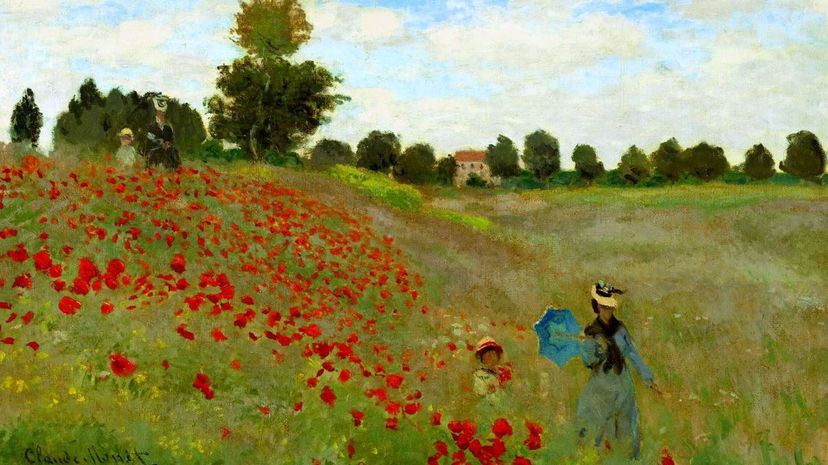
A contrast to Realism, Impressionism looked at the fleeting moments of life that pass us by. The movement conveyed this theme of elusiveness by utilizing broken brush strokes and placing figures randomly throughout the composition.
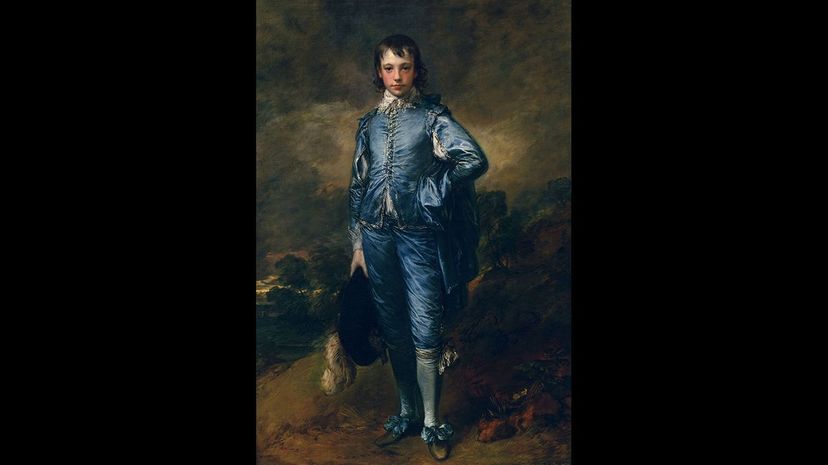
Artists who were part of the Rococo movement utilized softer pastel colors in their artwork. This coloring style, evident in "The Blue Boy," reflected the lightheartedness associated with the wealthy classes across France.

Baroque was derived from the Portuguese term "barroco," meaning an irregularly shaped pearl. This term fit the Baroque period, as the movement was known for its lavish yet unique style.
Advertisement

As with most Modern art, Primitivism relied less on aesthetic and more on diverse cultural attitudes. Specifically, Primitivism found inspiration from non-Western traditions found in more tribal settings.
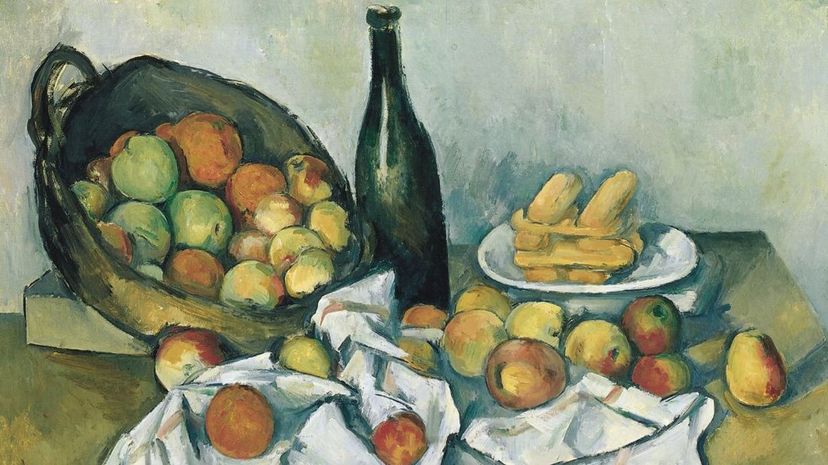
While Post-Impressionists relied on the subjective approach to art used by Impressionists, they did not have a unified aesthetic that defined their work. Instead, they sought to explore the thoughts of the artists.

No painter was more influential during the Neoclassical movement than Jacques-Louis David. His paintings, such as "Death of Marat," became closely connected to the French Revolution, a period that allowed David to expand his influence over art.
Advertisement
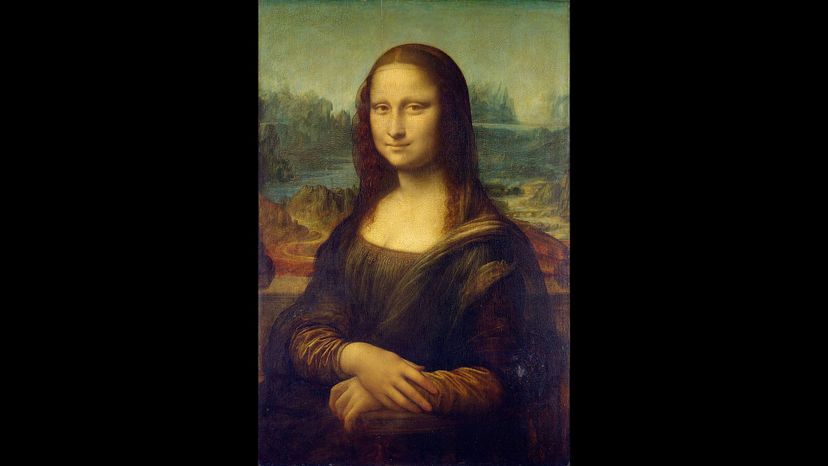
Leonardo da Vinci's "Mona Lisa" contrasted many societal norms associated with 16th century Europe. Instead of depicting a member of the higher classes, da Vinci's painting shows a woman of lower status as an individual rather than as an object of admiration.

"The Thankful Poor" is an example of how Realist painters carefully studied nature to create their scenes. The painting uses immense light to fill the room while capturing the intense act of prayer occurring between the two subjects.
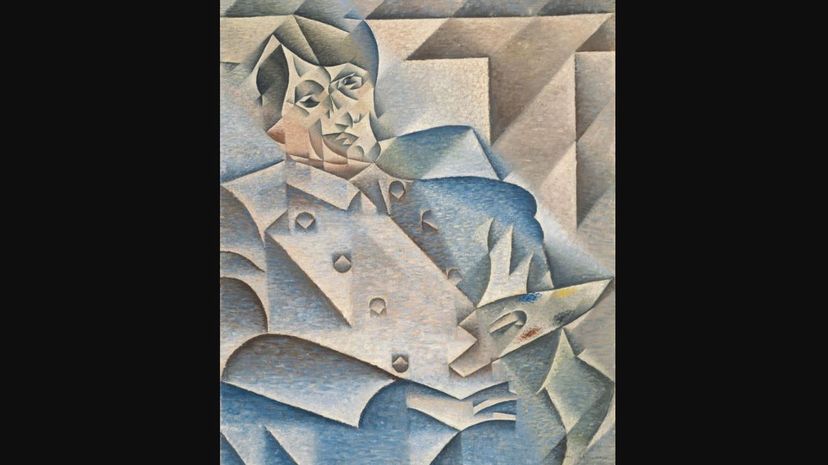
Cubism was heavily influenced by Paul Cezanne, who experimented with the hidden architecture of form. Pulling from Cezanne, Cubist artists, such as Pablo Picasso, used fragmented geometric forms to create a series of vantage points in an art piece.
Advertisement
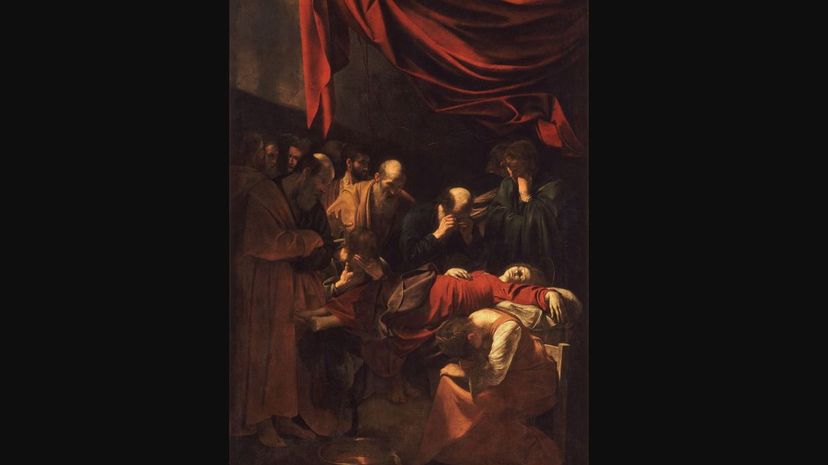
As shown in "Death of the Virgin," Baroque art pulled from religious motifs to capture a feeling of meaningfulness. Caravaggio accomplished this by the typical Baroque use of rich colors while exploring realism that relied on everyday people as models.
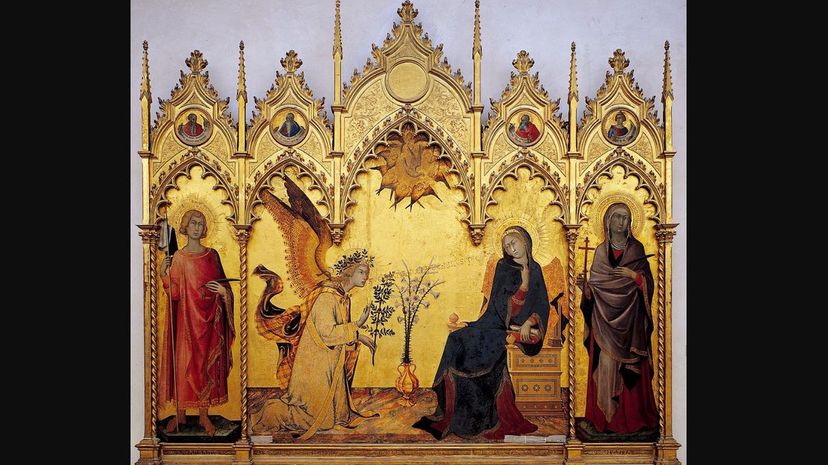
Though the Gothic style is typically viewed in terms of architecture, it did find its way into paintings as well. "Annunciation with St. Margaret and St. Ansanus" was one such example, which utilized the luxurious patterns and an intricate frame often associated with French Gothic.
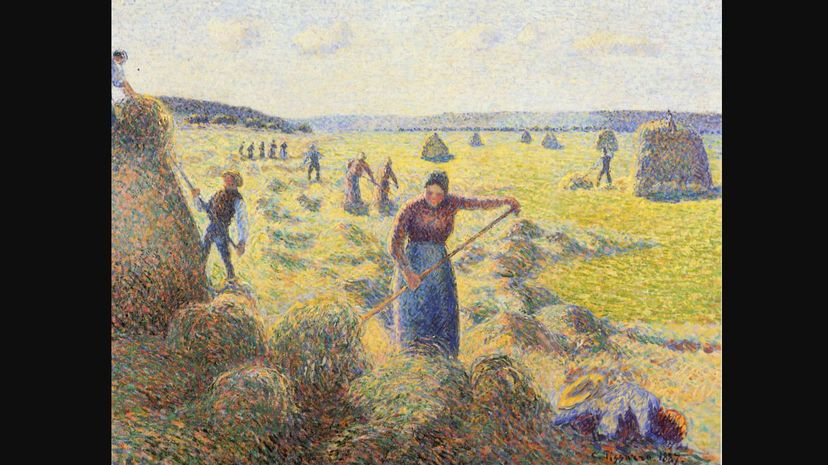
Pointillism was one of the major techniques explored in the Neo-Impressionist movement by artists like Camille Pissarro in "La Recolte des Foins, Eragny." The technique required that an artist observe and separate colors for an image then apply them through a series of tiny dots.
Advertisement

Coming from the Venetian School, Rococo artists found erotic subjects appealing, which was depicted in their artwork. These subjects were often the result of a life of leisure that many in the upper French society enjoyed in the early-18th century.
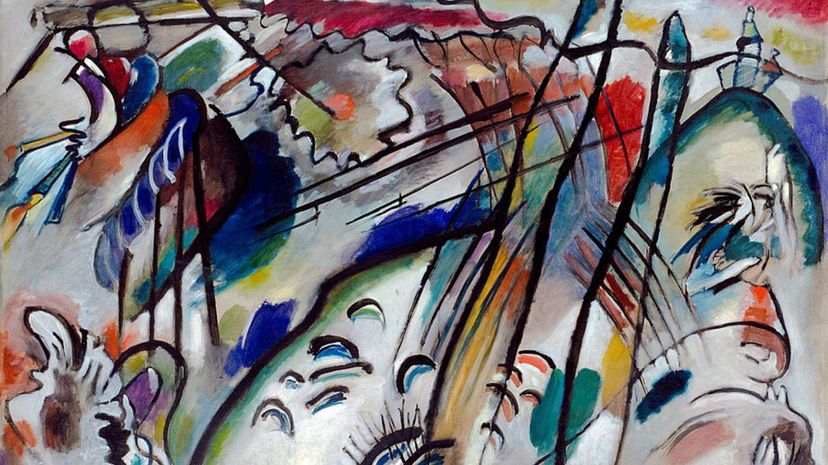
Expressionists like Wassily Kandinsky hoped to not only capture their own expressive feelings in their art but also to elicit a response from viewers. Kandinsky accomplished this by relying on an avant-garde style that utilized complete abstraction.
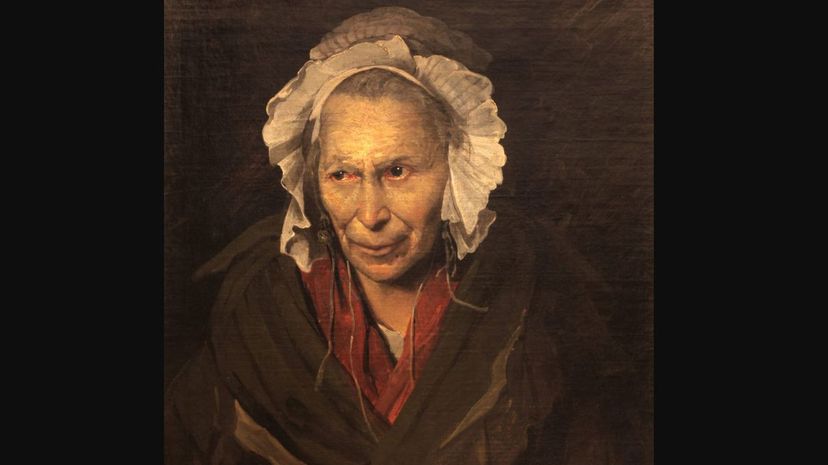
Theodore Gericault displayed in "Insane Woman" the interest that Romantic artists had in those considered to have a deranged state of mind. His piece looked at how mental states reflect the true character of a subject.
Advertisement
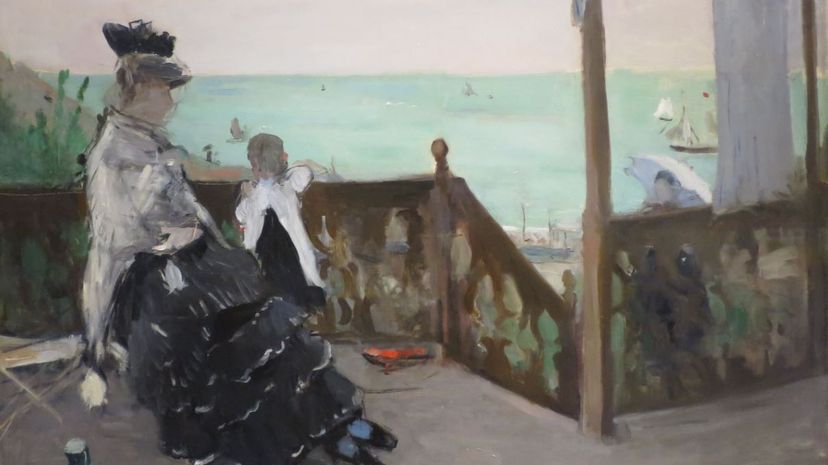
Occasionally, works within the Impressionist movement sought to represent an escape from the city life. That's the case for "In a Villa at the Seaside," which shows a scene of a seaside resort with a woman relaxing under a shaded veranda.

Some Realist painters, like John Everett Millais, broke away from strict Realist practices that ignored historical and fictional subjects. While sticking to other traditions of Realism, these artists started a group known as the Pre-Raphaelite Brotherhood.
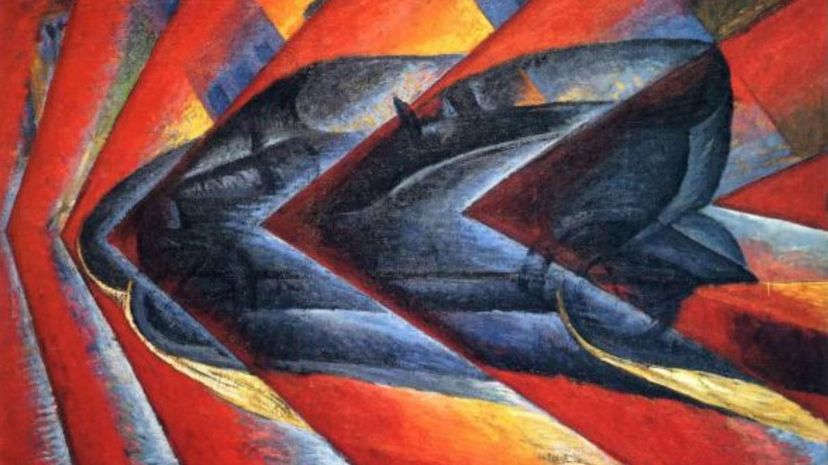
Futurist artists found inspiration in progress and modernity that came to define the 20th century. As machines rose to prominence, these artists wanted to separate themselves from any traditional artistic associations.
Advertisement
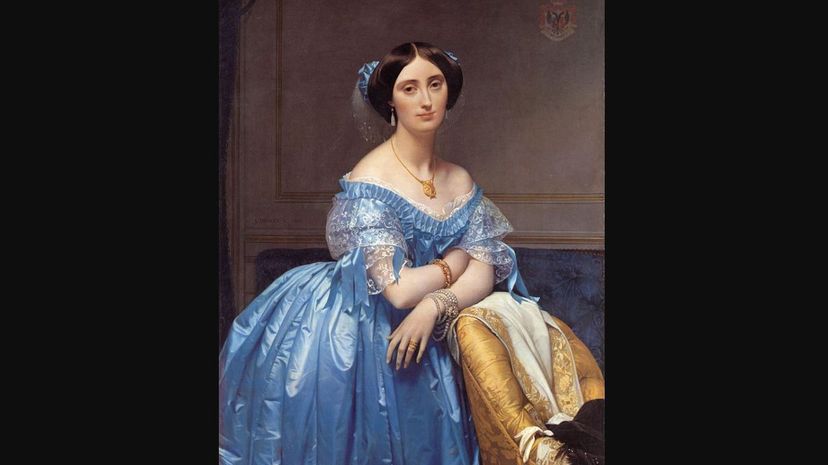
Coming during a time when new ideas were flowing across the Western world, Neoclassicism relied heavily on the ideals of the Enlightenment. The movement's focus turned to classical societies, like Greece and Rome, as it tried to capture the geometric harmony of classical art.
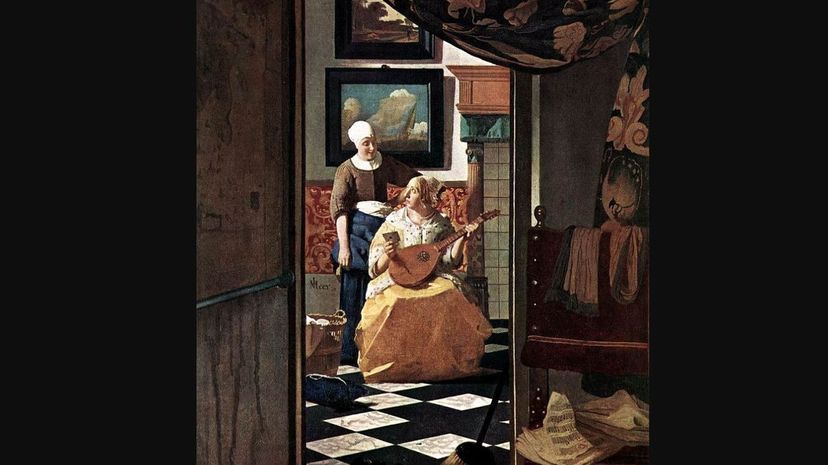
Baroque art cannot be understood without looking at the importance of drama within the movement. The style was able to incorporate drama by utilizing contrasts between light pouring in and intense shadows.

The Renaissance represented a period of high learning, and no painting depicted this concept better than "The School of Athens" by Raphael. In the piece, Raphael brings together a congregation of the great thinkers of ancient societies from Plato and Aristotle.
Advertisement

Seeking to express its view on human freedom, Romanticism pushed the notion that the imagination will lead to one being free over reason. The artists associated with this movement believed that the imagination was a pure expression of how we all feel.
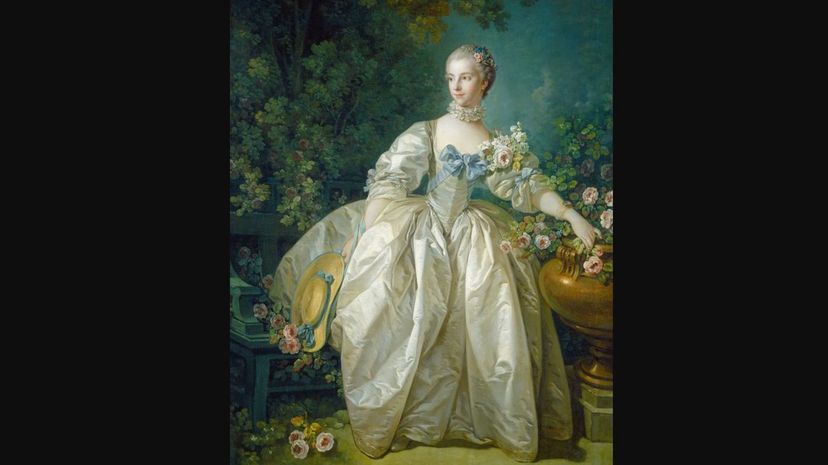
No artist was more popular during the height of the Rococo movement than Francois Boucher, who painted "Madame Bergeret." Boucher became known for his depiction of aristocrats, who he portrayed with a sense of elegance.
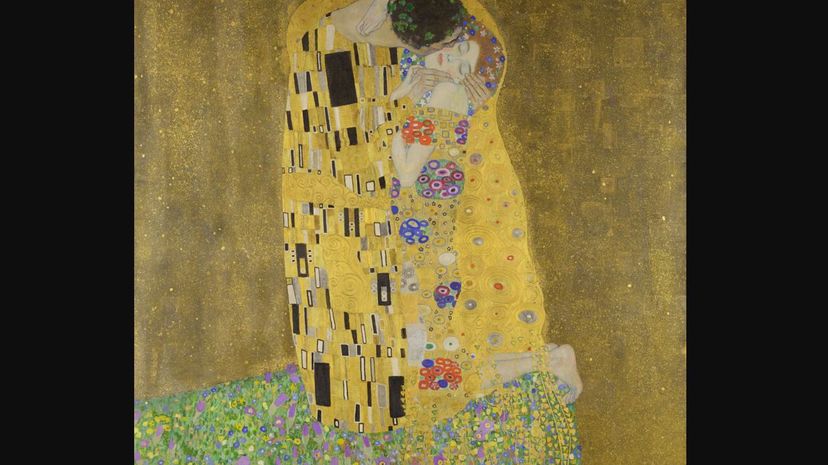
In Symbolism, artists found that they could be more expressive by inserting meaning behind the elements within their work like forms, lines and colors. This movement was one of the forerunners of Modern art because it brought about psychological truth through a hidden world.
Advertisement
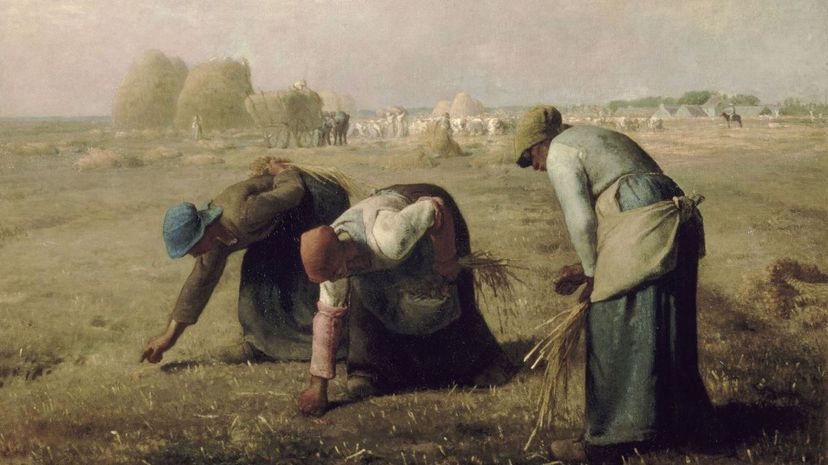
As seen in "The Gleaners," realist painters often traveled to the countryside to find subjects that more closely reflected their style. Jean-Francois Millet even took up residence in a village called Barbizon, where he established the Barbizon School to better explore this style.
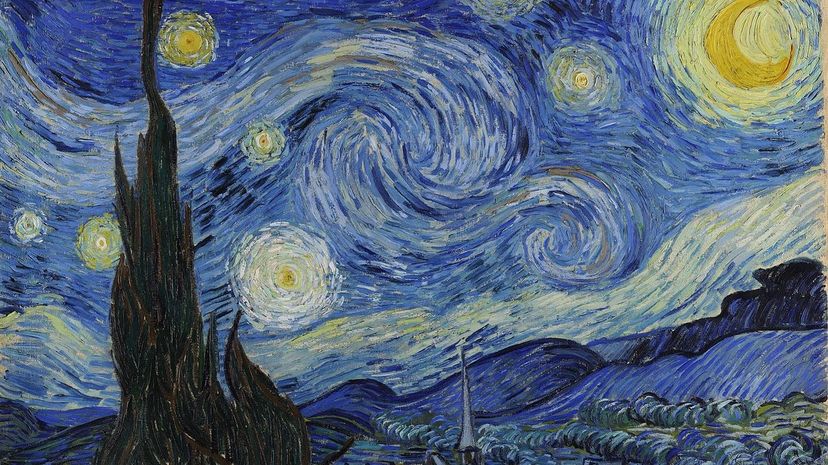
Evocative colors that relied on emotional expression was an important component of Post-Impressionism. Using a range of rich colors, these artists were able to capture a more imaginative view of what they were representing.
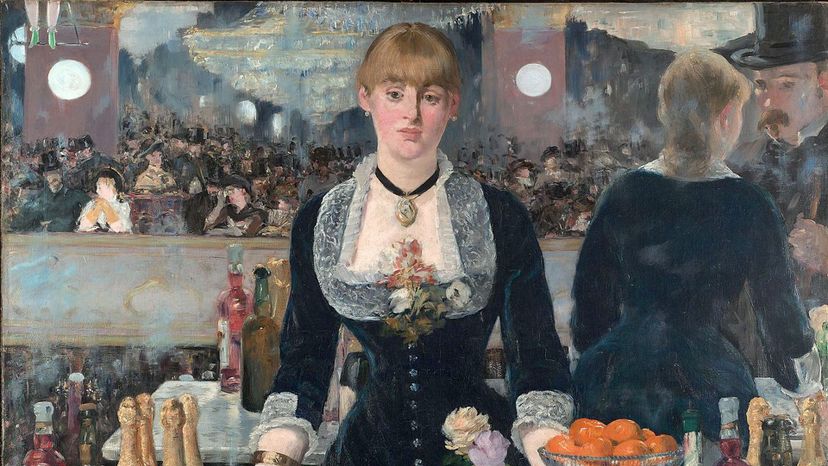
Impressionists used very pure colors to more accurately capture how light reflects across the world around us, but this technique required them to paint distorted images. At the time of the movement, they were often criticized for what was perceived as unfinished work.
Advertisement
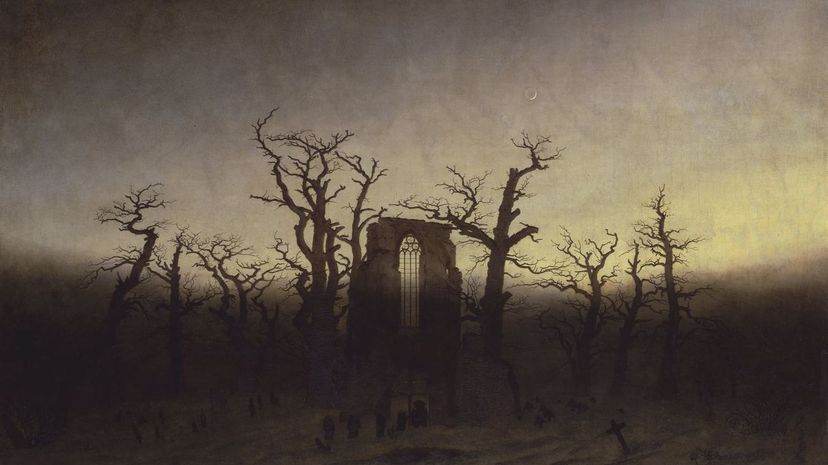
Though some art historians say Romanticism began in the 1750s, its birth wasn't clear until it fully separated itself from Neoclassicism. However, this separation wasn't evident until the beginning of the 19th century.